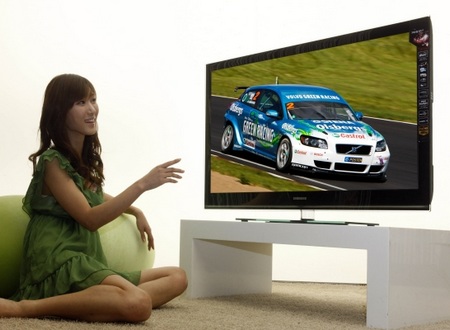
With so many brands and models with varying specs now available, your quest will require knowledge and above all patience. To help you in your quest here are a few points to consider before purchasing a High Definition TV:
1. Size Does Matter
Sometimes the bigger does not mean better. Each HDTV size, be it a Plasma or LCD TV, has an optimal viewing distance. Determine the distance between the TV to where you would normally watch it and use the table below to determine what size TV will best suit your needs.
| SCREEN SIZE | OPTIMAL VIEWING DISTANCE |
| 30 to 34 inches | 3.75 to 6.25 feet |
| 34 to 42 inches | 4.25 to 7 feet |
| 42 to 50 inches | 5.25 to 8.75 feet |
| 50 to 56 inches | 6.25 to 10.5 feet |
| 56 to 62 inches | 7 to 11.75 feet |
| 62 to 70 inches | 7.75 to 13 feet |
Based on the Lechner Chart
2. Viewing Angles
Normally we sit looking direct at the TV set, but you also need to think of guests and family members. For instance, it’s worth taking into account that Plasma TVs have better views from obtuse angles compared to LCD TVs where viewing quality is reduced from such angles.
3. What HDTV Technology should I Choose?
As you’ve probably gathered, HDTVs have two main technologies: Plasma and LCD. But new technologies have emerged since HDTV’s early days. Technologies like OLED and Rear Projection are now available but should really only be considered in very special cases.
LCD TVs are the more popular of the two HDTV technologies, with the widest range of screen sizes and an improved picture performance. LCD HDTVs are suitable for brighter rooms with large windows as they reflect less light.
Over the years LCD HDTVs dominated the sales in the mid/low size range forcing Plasma TV manufacturers to refocus their efforts on larger TV set. If you are thinking big (we’re talking 50 inches plus), you want to look for a Plasma TV. It is important to remember that Plasma is not the best choice for rooms with too much light in, as the glass on the screen reflects direct light more readily than LCD screens.
4. Resolution
Thanks to the Blu-ray revolution and the next generation of game consoles (particularly PS3 and Xbox 360) resolution is a key feature in HDTVs. For serious gamers a Full HD with 1080p is undoubtedly the best option but, again, viewing distance remains a factor because from 12 feet, a normal person with a perfect eye-sight cannot tell the difference between a 720p and a 1080p TV regardless of size.
5. Contrast Ratio
Very simple tip here: when it comes down to contrast ratio the higher the better.
And with that, we’ve covered all the basics you need to know before purchasing your first HDTV.
Amazing Site I like it. It Was Quite Interesting I appreciate the information you provided Excellent post. Keep it up! Good day!
Hello, I'm in the process of researching for an article that I am typing for my own site. I have found this post most helpful and I would like to enquire if I may link to your post as it may be of great interest to my readers? Many thanks. James Forde
I like how flexible OLEDs have a quicker response time than LEDs!
I'm still a huge fan of plasmas especialy big ones 😀 But I'm waiting for those damn 3d TV's without glasses I read on Costco TV